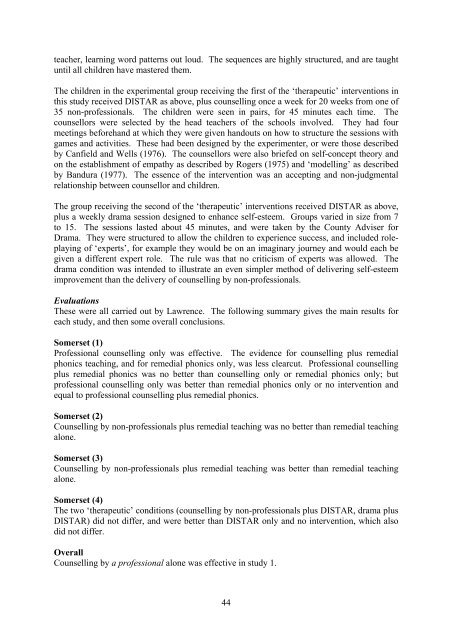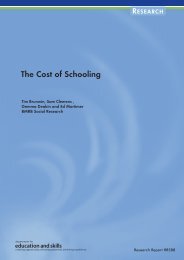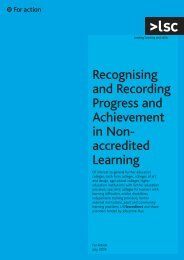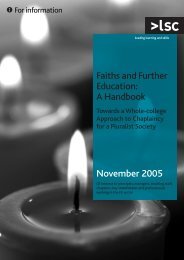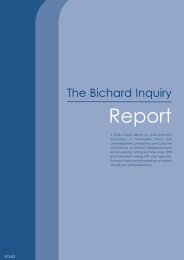What Works for Children with Literacy Difficulties? - Digital ...
What Works for Children with Literacy Difficulties? - Digital ...
What Works for Children with Literacy Difficulties? - Digital ...
You also want an ePaper? Increase the reach of your titles
YUMPU automatically turns print PDFs into web optimized ePapers that Google loves.
teacher, learning word patterns out loud. The sequences are highly structured, and are taught<br />
until all children have mastered them.<br />
The children in the experimental group receiving the first of the ‘therapeutic’ interventions in<br />
this study received DISTAR as above, plus counselling once a week <strong>for</strong> 20 weeks from one of<br />
35 non-professionals. The children were seen in pairs, <strong>for</strong> 45 minutes each time. The<br />
counsellors were selected by the head teachers of the schools involved. They had four<br />
meetings be<strong>for</strong>ehand at which they were given handouts on how to structure the sessions <strong>with</strong><br />
games and activities. These had been designed by the experimenter, or were those described<br />
by Canfield and Wells (1976). The counsellors were also briefed on self-concept theory and<br />
on the establishment of empathy as described by Rogers (1975) and ‘modelling’ as described<br />
by Bandura (1977). The essence of the intervention was an accepting and non-judgmental<br />
relationship between counsellor and children.<br />
The group receiving the second of the ‘therapeutic’ interventions received DISTAR as above,<br />
plus a weekly drama session designed to enhance self-esteem. Groups varied in size from 7<br />
to 15. The sessions lasted about 45 minutes, and were taken by the County Adviser <strong>for</strong><br />
Drama. They were structured to allow the children to experience success, and included roleplaying<br />
of ‘experts’, <strong>for</strong> example they would be on an imaginary journey and would each be<br />
given a different expert role. The rule was that no criticism of experts was allowed. The<br />
drama condition was intended to illustrate an even simpler method of delivering self-esteem<br />
improvement than the delivery of counselling by non-professionals.<br />
Evaluations<br />
These were all carried out by Lawrence. The following summary gives the main results <strong>for</strong><br />
each study, and then some overall conclusions.<br />
Somerset (1)<br />
Professional counselling only was effective. The evidence <strong>for</strong> counselling plus remedial<br />
phonics teaching, and <strong>for</strong> remedial phonics only, was less clearcut. Professional counselling<br />
plus remedial phonics was no better than counselling only or remedial phonics only; but<br />
professional counselling only was better than remedial phonics only or no intervention and<br />
equal to professional counselling plus remedial phonics.<br />
Somerset (2)<br />
Counselling by non-professionals plus remedial teaching was no better than remedial teaching<br />
alone.<br />
Somerset (3)<br />
Counselling by non-professionals plus remedial teaching was better than remedial teaching<br />
alone.<br />
Somerset (4)<br />
The two ‘therapeutic’ conditions (counselling by non-professionals plus DISTAR, drama plus<br />
DISTAR) did not differ, and were better than DISTAR only and no intervention, which also<br />
did not differ.<br />
Overall<br />
Counselling by a professional alone was effective in study 1.<br />
44


